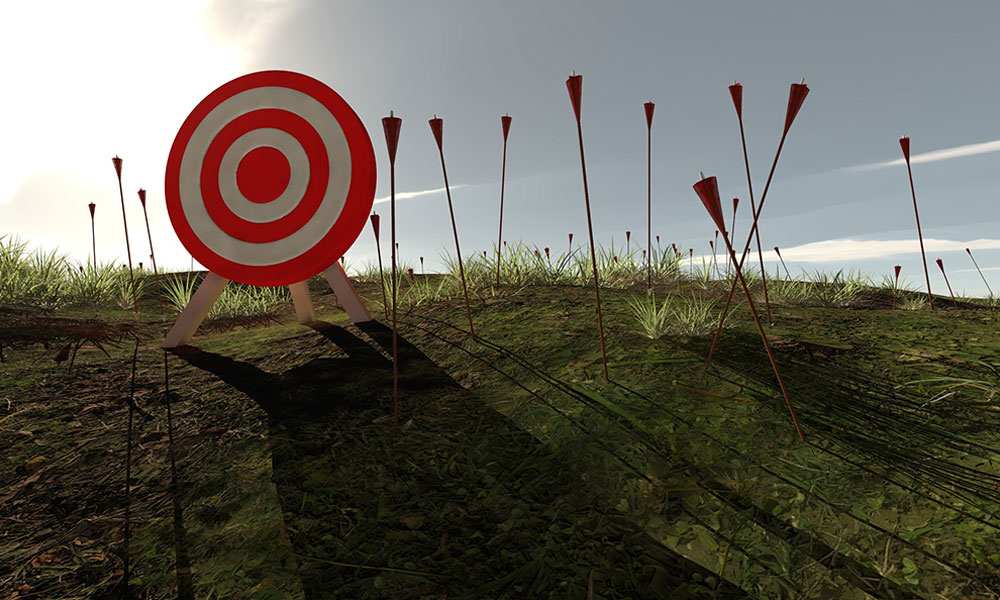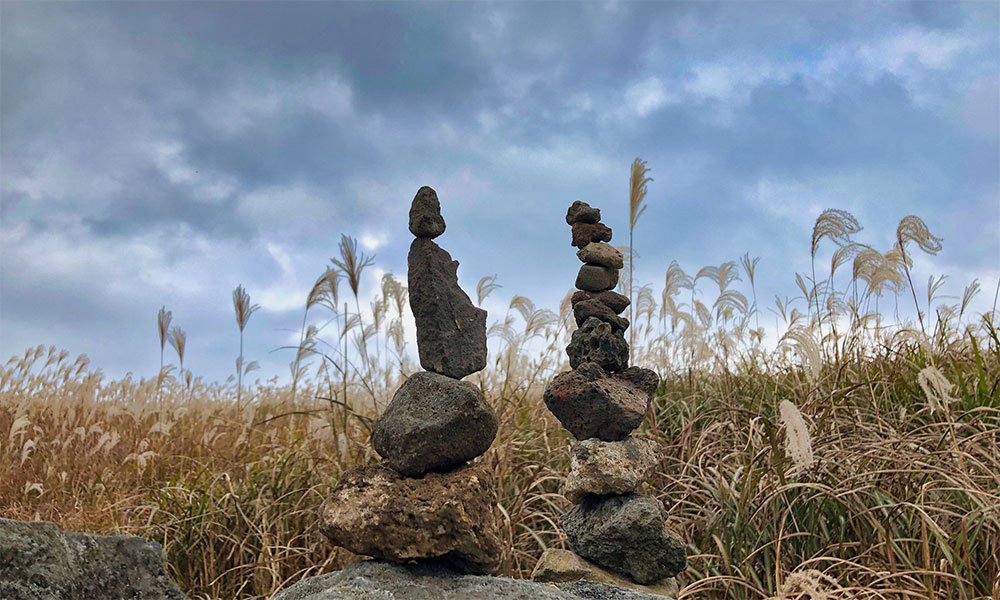We recently concluded our 360 degree feedback process, which was, like most years, met with mixed reactions. Not surprising though; because receiving feedback is always tricky. As leaders, we often think that we are required to have all the answers. That doesn’t leave much space for us to be asking around for help. Add to that your uncertainty around the real motives of why people may be sharing the feedback they are. If you’re honest with yourself, you will probably find that you spend more time questioning the authenticity of the feedback than you do introspecting about it. Why? Because feedback can make you deeply uncomfortable. No one likes hearing what could be going wrong. And yet, without creating the right kind of support system and feedback loops, we run the risk of becoming too insular.
So, I am pleased that Shashank Shekhar has agreed to write this week’s message on how 360 degree feedback can be a powerful tool for self-reflection and development. Shashank, as you know, leads HR for our international businesses. Before moving into this role, Shashank worked extensively in our India business. Over the last few years, it has been wonderful to see Shashank’s commitment and passion to improve our people processes. Alongside, Shashank has shown a lot of keenness to improve his skill set and take on greater levels of responsibility.
Please read on…
360 degree feedback: a threat, or a gift?
It has now almost been a fortnight since we concluded the process at Godrej and I have had the opportunity to reflect on the experience of the process.
The 360 degree feedback process reminds me of a game: “[He/She] Loves Me [He/She] Loves Me Not”, apparently a game of French origin (effeuiller la marguerite) in which one person seeks to determine whether the object of their affection returns that affection or not. A person playing the game alternately speaks the phrases “He [or she] loves me” and “loves me not”, while picking one petal off a flower (especially an ox-eye daisy) for each phrase. The phrase they speak on picking off the last petal supposedly represents the truth between the object of their affection loving them or not. The outcome depends on whether the flower has an even or odd number of petals.
At GILAC, we ran the process for our 1,500 odd managerial population, and each respondent was a petal in the daisy flower of feedback that we were seeking. We oscillate between thoughts of ‘It is a gift, it is a threat; it is a gift, it is a threat’.
While binary thinking can help us survive, it can, over a period of time, be a costly mistake. Metaphorically speaking, until the reports are finally out, we will keep wondering whether our daisy has an even number or an odd number of petals 🙂 Until then, we can reflect on how the two forks in the road can merge more often towards common goals in our journey of self-development.
In the Leading Others’ spirit of conscious and consistent improvement, let us reflect on the 360 Degree feedback process, as we await our reports, so that we may take one more step in our continuous journey of development.
Shall we begin with a little understanding of the process, and its history then?
360 degree feedback is a tool that provides employees the opportunity to receive feedback on their Godrej Capability Factor (GCF) capabilities from multiple sources: their supervisor, direct reports and extended team, colleagues from the team, department, other functions, other businesses and external customers. This process also allows each individual to understand how their effectiveness in different roles is perceived by others vis-à-vis their own understanding of themselves.
Since leadership is a relationship between the leader and the followers, and is influenced by the perceptions of those involved, the importance of this process cannot be over-emphasised.
Many of you are probably familiar with the concept of the ‘Johari Window’ and its four regions (if not, do read up on it):
- Open Area – what is known by the person about him/herself and is also known by others
- Blind Area – what is unknown TO the person about him/herself but which others know
- Hidden Area – what the person knows about him/herself that others do not know
- Unknown Area – what is unknown to the person about him/herself and is also unknown to others
The 360 degree feedback process, by its very design, enables increasing your Open Area and reducing your Blind Area, through a systematic process of feedback collection and synthesis. And since it is what we do not know about ourselves that hurts us the most, feedback from others plays a very crucial role not only in our development, but also our survival.
I often wondered, how the idea of multi-source feedback came about. So, I looked up a little bit on its early history. The first known use of a multiple-source feedback method was during World War II, by the German military. Soldiers were evaluated by peers, supervisors and subordinates to provide insight and recommendations on how to improve performance. The U.S. military used a similar performance appraisal concept during World War I, but the feedback lacked the appraisals of subordinates that the Germans incorporated. One of the first uses of the technique in a commercial setting occurred in the 1950s at Esso Research and Engineering Company. It was famously used by Jack Welch in the 1980s during his days at General Electric.
History considered, in this new age and world, is the process still relevant to us? To answer that question, let’s look at the context in which we operate. As managers in a large, complex organisation like ours, we face a daily challenge: to ensure that our team members collaborate, make quick and effective business decisions, and provide our customers with superior products and services.
In keeping with this challenge, the 360 degree feedback process helps our organisation in more ways than one:
1. Offers insights on the known as well as the unknown
This is for areas of strengths and opportunities for development at individual/ team/ organisation levels.
2. Assists in creating feedback loops within the organisation that foster trust based relationships
The process offers a psychologically safe environment to foster cross exchanges, enhancing one’s own understanding of oneself as well as the impact of one’s behaviours on others. This has the potential to positively impact the kind of relationships that are fostered in the organisation. Think about it this way: When trust is low, in a company or in a relationship, it places a hidden ‘tax’ on every transaction: every communication, every interaction, every strategy, every decision is taxed, bringing speed down and sending costs up. In my experience, significant distrust substantially increases the cost of doing business and the time taken to get things done. Similarly, enhancing trust in relationships through consistent feedback loops in psychologically safe environments can place us at a significant advantage by converting the hidden ‘tax’ to a visible ‘dividend’.
3. Enhances individual/ organisation ability to simulate future events
Research suggests that ‘Intelligence seems to be correlated with the complexity with which we can simulate future events’. The parts of our brain used to plan for future events are the same as those involved in recalling memories. The inputs derived from a process like this at an individual level assist us in simulating and planning for the future by reflecting upon past experiences through different employee lenses.
4. Enhances our understanding of our position amidst complex interactions
The process is well aligned with the evolution of the organisation as well as the behaviours that would lead to organisation outcomes. The differentiated level wise GCF framework assists our understanding of self and others and enables us to evaluate our standing amidst dynamic social interactions.
In my personal experience, your grades in school and college, and your scores in CAT/GMAT, mean less for success in life than your ability to regulate your emotions, your capacity to delay your gratification, your ability to co-operate, and your capability to use your personal as well as organisational resources to deliver results, satisfy customers, innovate and contribute to your organisation in various capacities. In our context, these translate into our abilities to Lead Self, Others and Business, essentially our GCFs. The 360 Degree Feedback process provides us with multi-source feedback on the GCFs organised under these very pillars upon which our organisational success is built.
Here are some of my own experiences of leveraging this process for self-development:
1. Adjusting my style to respond to the needs of different individuals and teams
‘Leading Team – Adjusts style to respond to the needs of different individuals and teams’ – my feedback has suggested this as an area of improvement, ever since I received this feedback for the first time. (I can imagine my current and previous team members smiling in agreement as they read this). I must accept that my natural response was to externalise the feedback to the context of driving change. But some serious introspection, validated with other tools like the Gallup Strengths-finder, helped me accept the need to work on it. I felt compelled to share my 360 Feedback report with my team members and requested them for one-on-one feedback. While this is certainly not an area of strength even today, I believe I have made progress and consequent feedback reports seem to reinforce that. Also, in the context of the change in my role – from partnering the India business to partnering multi-geography, multi-cultural international businesses – the awareness of this development need, followed by some conscious effort to change, has been a critical enabler.
2. What made one successful in the past, does not necessitate success in the future
As I made the transition from Level 3 to Level 4 myself, I realised how the game changes. The 360 Degree Feedback process has helped me understand these demands and adjust accordingly. For example, at Level 3, it was sufficient to ‘Lead the capability development agenda for the work area, seen by many as a mentor’ (one of the behaviours under Leading Others). However the requirement at Level 4 changes significantly to: Leading strategic capability development agenda through: (i) Identifying and coaching the next generation of leaders, (ii) Building future ready functional capabilities and (iii) Creating a culture of continuous improvement through learning.
I have made this a priority for myself and I believe that I have been able to improve. The respondent feedback on survey questions have been a positive reinforcement in this journey and a recognition of this effort.
To help our managers get the most out of this process, this year we have made the following significant refinements:
1. Level Differentiated Survey Questionnaire
At each of our four levels, the demands made of us are different. The questionnaire this year was modified to include and reflect this philosophy. The following phrases articulate well how the expectations change across levels: Level 1: ‘Execute and Collaborate’, Level 2: ‘Improve and Lead’, Level 3: ‘Build and Enable Change’, Level 4: ‘Envision and Transform’.
2. Refined Respondent Selection Process
Since each of us now selects who we want input from, it means that we will know who all have filled out the survey (it is still anonymous, of course!). We must accept their feedback as a gift, and not perceive it as a threat. After all, we have chosen our respondents. Our reports are now going to have the names of the individuals who have provided us with feedback. None of these individuals want to harm us, just as we do not wish to do them harm. In fact, we can go up to some of these colleagues, and discuss the feedback in more detail. In this context, it is important to trust the feedback and look inwards. As Carl Jung said, “Who looks outside, dreams; who looks inside, awakes.”
3. Building a shared understanding of the process
If you have not been through the 360 Degree Feedback module, it is not too late. It is still available on our Learning Management System. It offers a clear understanding of the objectives of the process, and its mechanisms. I found it insightful. The key is to understand that the organisation never looks at the 360 Degree Feedback data in isolation, and that, for me, reduces for me the perceived threat from the process.
As I eagerly await my report, I am planning to do four things once I get the report:
- Take a holistic look at the inputs that I receive in my report– Reflect upon the trends in terms of emerging themes across sections over the years, perception gaps between my idea of myself and others’ idea of me and validate the themes with other inputs like assessment reports.
- Use the qualitative comments to facilitate my understanding – I believe that well-reflected upon feedback can stimulate natural development processes by focusing our attention on issues that might later come to a head on their own.
- Engage one-on-one on my development themes and action plans with each member of my team and some other stakeholders who have been my mentors in this journey.
- Discuss this with my manager during the mid-year review and incorporate the inputs in my development plan.
In this spirit, I invite you to join me in the journey of self-reflection and continuous improvement. It is a small step, but then, what is a journey but a series of small steps.
A big thank you to Shashank for sharing such an honest and useful message. As he very rightly points out, it isn’t easy to open up and accept feedback for what it is. But if we do want to become more effective leaders – and more than that, more aware and grounded individuals – then we need to become much more receptive to feedback. As author Ken Blanchard put it, feedback is the breakfast of champions. So, the question we need to ask ourselves is what we can do to stop seeing feedback as threatening, and instead, see the tremendous opportunity that it can offer? This is a deeply personal shift and only you can really make it possible for yourself.
At the end of the day, the value of any tool is based on how well you use it. The 360 degree survey is no different. I have personally found the feedback very valuable to make changes in my leadership approach and style. And I do hope that when you do get your feedback reports this month, you will commit to using them wisely.
I’m sure that many of you will also have your own stories to share. I look forward to hearing from you.








Insightful
Great… Got detailed analysis of 360 degree feedback. Can we rely on this while recruiting?